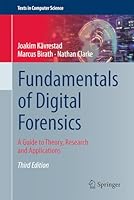
Static Program Analysis: Statistics for Dummies
- Length: 158 pages
- Edition: 1
- Language: English
- Publisher: Independently published
- Publication Date: 2021-01-31
- ISBN-10: B08VCH8ZWM
- ISBN-13: 9798702738413
Static program analysis is the art of reasoning about the behavior of computer programs without actually running them. This is useful not only in optimizing compilers for producing efficient code but also for automatic error detection and other tools that can help programmers. A static program analyzer is a pro- gram that reasons about the behavior of other programs. For anyone interested in programming, what can be more fun than writing programs that analyze programs?As known from Turing and Rice, all nontrivial properties of the behavior of programs written in common programming languages are mathematically undecidable. This means that automated reasoning of software generally must involve approximation. It is also well known that testing, i.e. concretely running programs and inspecting the output, may reveal errors but generally cannot show their absence. In contrast, static program analysis can – with the right kind of approximations – check all possible executions of the programs and provide guarantees about their properties. One of the key challenges when developing such analyses is how to ensure high precision and efficiency to be practically useful. For example, nobody will use an analysis designed for bug finding if it reports many false positives or if it is too slow to fit into real-world software development processes.These notes present principles and applications of static analysis of pro- grams. We cover basic type analysis, lattice theory, control flow graphs, dataflow analysis, fixed-point algorithms, widening and narrowing, path sensitivity, rela- tional analysis, interprocedural analysis, context sensitivity, control-flow ana- lysis, several flavors of pointer analysis, and key concepts of semantics-based abstract interpretation. A tiny imperative programming language with point- ers and first-class functions is subjected to numerous different static analyses illustrating the techniques that are presented.We take a constraint-based approach to static analysis where suitable constraint systems conceptually divide the analysis task into a front-end that generates constraints from program code and a back-end that solves the constraints to produce the analysis results. This approach enables separating the analysis specification, which determines its precision, from the algorithmic aspects that are important for its performance. In practice when implementing analyses, we often solve the constraints on-the-fly, as they are generated, without representing them explicitly.We focus on analyses that are fully automatic (i.e., not involving program-mer guidance, for example in the form of loop invariants or type annotations) and conservative (sound but incomplete), and we only consider Turing com- plete languages (like most programming languages used in ordinary software development).The analyses that we cover are expressed using different kinds of constraint systems, each with their own constraint solvers:•term unification constraints, with an almost-linear union-find algorithm,•conditional subset constraints, with a cubic-time algorithm, and•monotone constraints over lattices, with variations of fixed-point solvers. The style of presentation is intended to be precise but not overly formal.The readers are assumed to be familiar with advanced programming language concepts and the basics of compiler construction and computability theory.The notes are accompanied by a web site that provides lecture slides, an implementation (in Scala) of most of the algorithms we cover, and additional exercises:………..

WINDOWS 11: A MODERNIZED OPERATING SYSTEM FOR ENHANCED PRODUCTIVITY AND SEAMLESS EXPERIENCES.






